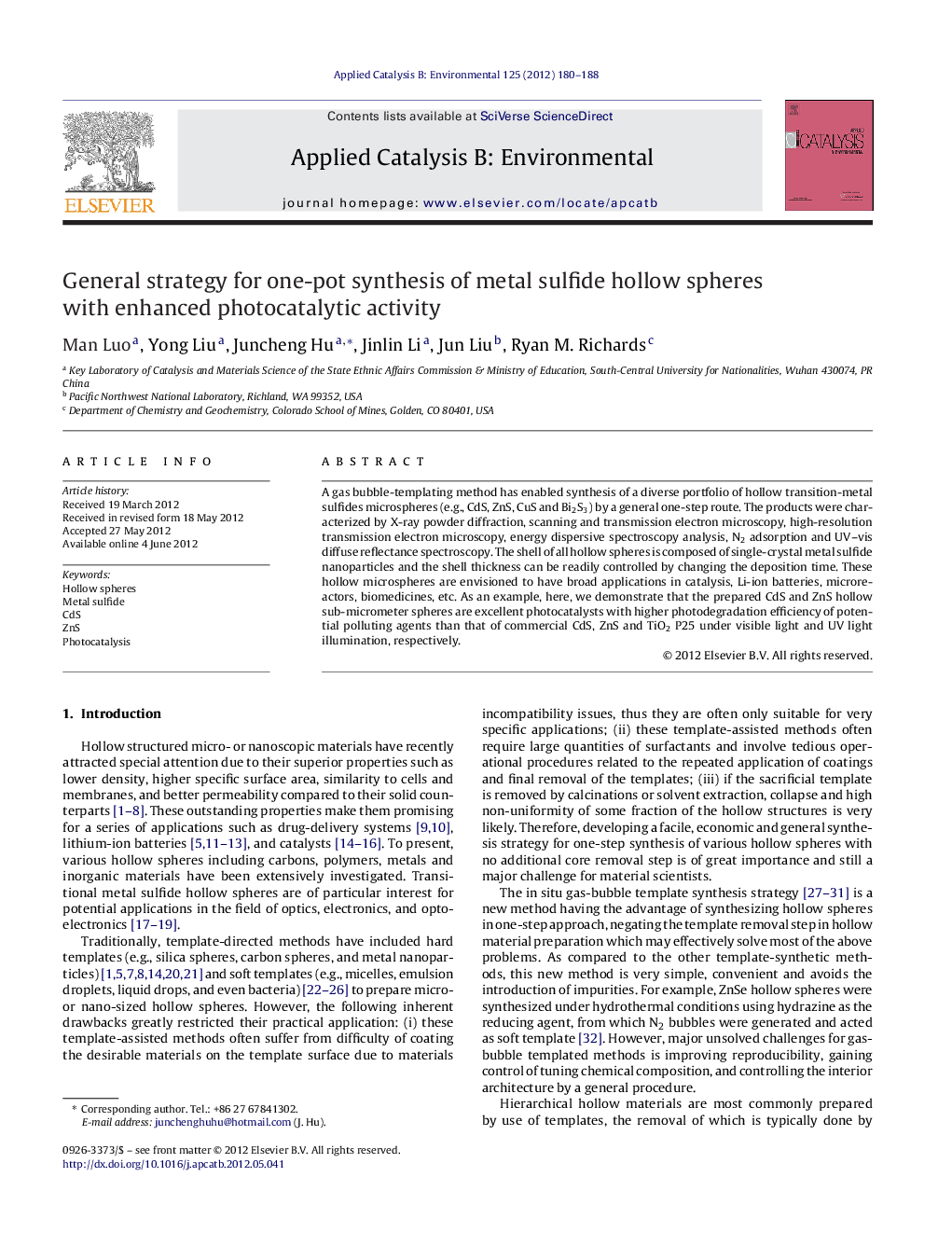| Article ID | Journal | Published Year | Pages | File Type |
|---|---|---|---|---|
| 46070 | Applied Catalysis B: Environmental | 2012 | 9 Pages |
A gas bubble-templating method has enabled synthesis of a diverse portfolio of hollow transition-metal sulfides microspheres (e.g., CdS, ZnS, CuS and Bi2S3) by a general one-step route. The products were characterized by X-ray powder diffraction, scanning and transmission electron microscopy, high-resolution transmission electron microscopy, energy dispersive spectroscopy analysis, N2 adsorption and UV–vis diffuse reflectance spectroscopy. The shell of all hollow spheres is composed of single-crystal metal sulfide nanoparticles and the shell thickness can be readily controlled by changing the deposition time. These hollow microspheres are envisioned to have broad applications in catalysis, Li-ion batteries, microreactors, biomedicines, etc. As an example, here, we demonstrate that the prepared CdS and ZnS hollow sub-micrometer spheres are excellent photocatalysts with higher photodegradation efficiency of potential polluting agents than that of commercial CdS, ZnS and TiO2 P25 under visible light and UV light illumination, respectively.
Graphical abstractFigure optionsDownload full-size imageDownload as PowerPoint slideHighlights► A general strategy has enabled synthesis of a diverse portfolio of metal sulfide hollow spheres. ► These metal sulfide hollow spheres were synthesized by a simple one-step route. ► The shell of all hollow spheres is composed of single-crystal metal sulfide nanoparticles. ► The enhanced photoactivity can be ascribed to their unique hollow structure.
